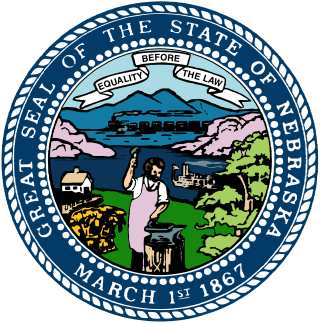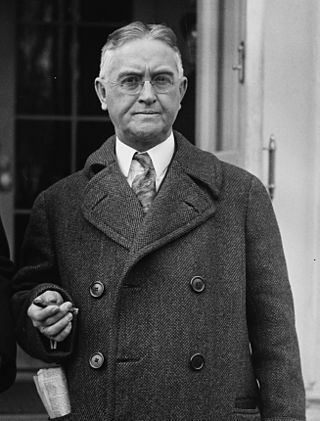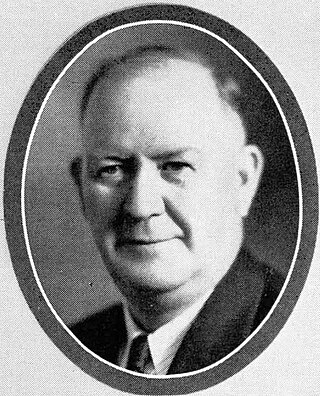
The 1998 Nebraska gubernatorial election was held on November 3, 1998. Term limits prevented incumbent Governor Ben Nelson, a Democrat, from seeking a third term in office. Republican nominee Mike Johanns, Mayor of Lincoln, defeated Democratic nominee, attorney Bill Hoppner. As of 2024, this was the last gubernatorial election in Nebraska in which the margin of victory was within single digits. Johanns later served Nebraska in the United States Senate with Nelson from 2009 to 2013.

The 2018 Nebraska gubernatorial election took place on November 6, 2018, to elect the governor of Nebraska, concurrently with the election of Nebraska's Class I U.S. Senate seat, as well as other elections to the United States Senate in other states, elections to the United States House of Representatives, and various Nebraska and local elections. Incumbent Republican governor Pete Ricketts won re-election to a second term.

The 1986 Nebraska gubernatorial election was held on November 4, 1986, and featured state Treasurer Kay Orr, a Republican, defeating Democratic nominee, former Mayor of Lincoln Helen Boosalis. Incumbent Democratic governor Bob Kerrey did not seek a second term.

The 1978 Nebraska gubernatorial election was held on November 7, 1978, and featured U.S. Representative Charles Thone, a Republican, defeating Democratic nominee, Lieutenant Governor Gerald T. Whelan. Incumbent Governor J. James Exon, a Democrat, was barred from seeking a third term. Exon was elected to the U.S. Senate that same day.

The 1964 Nebraska gubernatorial election was held on November 3, 1964, and featured incumbent Governor Frank B. Morrison, a Democrat, defeating Republican nominee, Lieutenant Governor Dwight W. Burney, to win a third and final two-year term in office.

The 1958 Nebraska gubernatorial election was held on November 4, 1958, and featured school superintendent Ralph G. Brooks, a Democrat, narrowly defeating incumbent Republican governor Victor E. Anderson, becoming the first Democrat to win the governorship since 1938.

The 1954 Nebraska gubernatorial election was held on November 2, 1954, and featured Mayor of Lincoln Victor E. Anderson, a Republican, defeating Democratic nominee, attorney William Ritchie.

The 1946 Nebraska gubernatorial election was held on November 5, 1946, and featured former school superintendent and newspaper publisher Val Peterson, a Republican, defeating Democratic nominee, state Senator Frank Sorrell.

The 1934 Nebraska gubernatorial election was held on November 6, 1934, and featured state engineer Robert L. Cochran, a Democrat, defeating Republican nominee, newspaper publisher and former state legislator Dwight Griswold.

The 1924 Nebraska gubernatorial election was held on November 4, 1924, and featured former state Senator Adam McMullen, a Republican, defeating Democratic nominee, former state Representative John N. Norton, and Progressive nominee, Omaha City Commissioner Dan B. Butler.

The 1918 Nebraska gubernatorial election was held on November 5, 1918, and featured former lieutenant governor Samuel R. McKelvie, a Republican, defeating incumbent Democratic governor, Keith Neville.

The 2022 Nebraska gubernatorial election took place on November 8, 2022, to elect the next governor of Nebraska. Incumbent Republican governor Pete Ricketts was term-limited and unable to seek a third term. In the general election, Republican Jim Pillen won the gubernatorial election by a 23-point margin.

The 1964 Nebraska lieutenant gubernatorial election was held on November 3, 1964, and featured 31-year-old Philip C. Sorensen, a Democrat, defeating Republican nominee Charles Thone. Incumbent lieutenant governor Dwight W. Burney decided to run for Governor of Nebraska and thus did not run for reelection as lieutenant governor.

The 1962 Nebraska lieutenant gubernatorial election was held on November 6, 1962, and featured incumbent Nebraska Lieutenant Governor Dwight W. Burney, a Republican, defeating Democratic nominee Rudolph D. Anderson.

The 1958 Nebraska lieutenant gubernatorial election was held on November 4, 1958, and featured incumbent Nebraska Lieutenant Governor Dwight W. Burney, a Republican, defeating Democratic nominee Frank Sorrell.

The 1956 Nebraska lieutenant gubernatorial election was held on November 6, 1956, and featured Speaker of the Nebraska Legislature Dwight W. Burney, a Republican, defeating Democratic nominee Frank B. Morrison who had been chosen to replace original Democratic nominee Stanley D. Long who had died during the campaign.

The 1950 Nebraska lieutenant gubernatorial election was held on November 7, 1950, and featured incumbent Nebraska Lieutenant Governor Charles J. Warner, a Republican, defeating Democratic nominee Edward A. Dosek, a businessman, to win his second term as lieutenant governor.

The 1946 Nebraska lieutenant gubernatorial election was held on November 5, 1946. Incumbent Nebraska Lieutenant Governor Roy W. Johnson lost to Robert B. Crosby in the Republican primaries after the Nebraska Republican Pre-Primary Convention refused to endorse him for reelection. Thus, the general election featured Robert B. Crosby as the Republican nominee who defeated Democratic nominee Robert J. Swanson.

The 1944 Nebraska lieutenant gubernatorial election was held on November 7, 1944, and featured incumbent Nebraska Lieutenant Governor Roy W. Johnson, a Republican, defeating Democratic nominee Edward A. Dosek.

The 1942 Nebraska lieutenant gubernatorial election was held on November 3, 1942, and featured Roy W. Johnson, the Republican nominee, defeating Democratic nominee Harry P. Conklin. The incumbent lieutenant governor, William E. Johnson, decided not to seek reelection in order to run for United States House of Representatives in Nebraska's First District in 1942.









